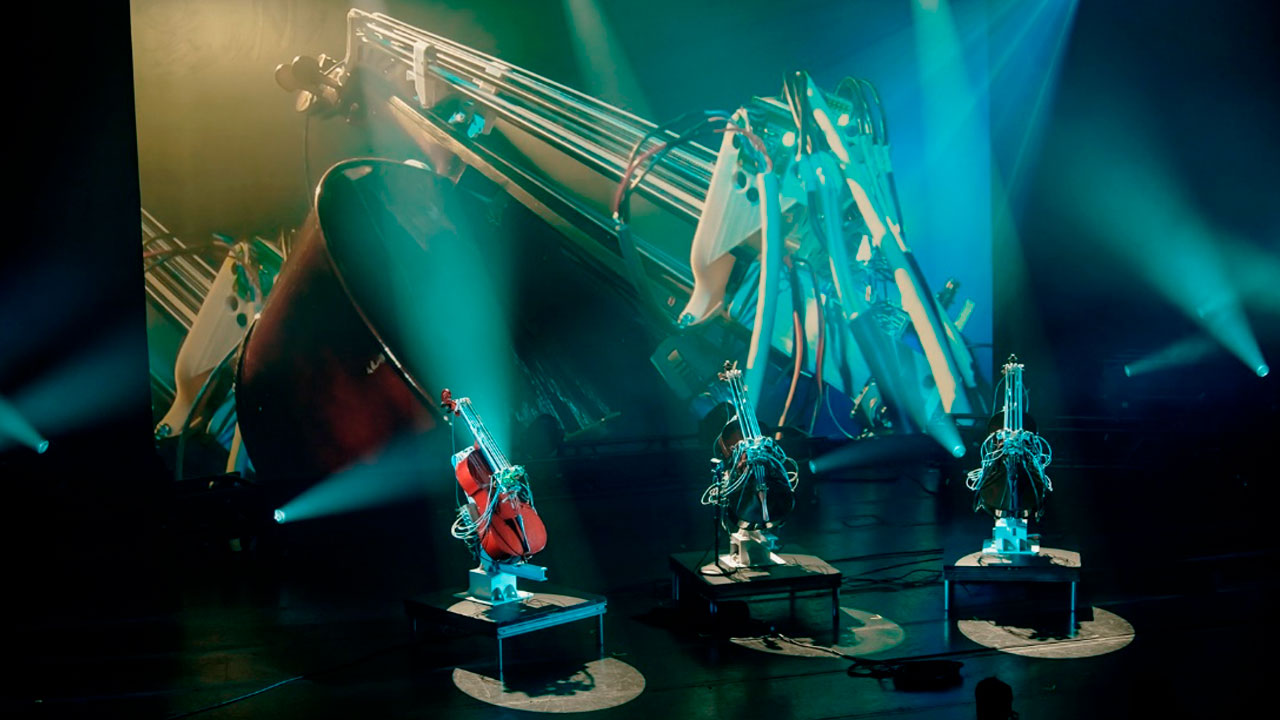Sofian Audry, Victor Drouin-Trempe, and Ola Sibert
MDPI, collection Review of Machine Art, 2023.
Abstract
The emergence of deep learning since the mid-2010s and its successful application to creative activity challenges long-held anthropocentric conceptions of art and music, bringing back ideas about machine creativity that had been previously explored in the 20th century.
Particularly, in the 1990s, some artists, composers, and musicians started working with machine learning and other adaptive computation systems. The work of Nicolas Baginsky is emblematic of that era. In 1992, he created the robot guitar Aglaopheme, which became the first performer of a self-learning robotic band developed throughout the 1990s, soon joined by the robot bass Peisinoe, the robot drum Thelxiepeia, and eventually other artificial agents, forming the autonomous robotic band The Three Sirens.
In this review, we describe the technological, musical, and imaginative aspects of Baginsky’s robotic instruments. The unreal and behind-the-scenes story of the mythological three sirens is important in understanding how the robots are designed and what they (are) intend(ed) to do. In the context of artificial intelligence, the concept of seeking a surprising musical effect will push us to reimagine such concepts as musical creativity and improvisation within the algorithmic composition and provide opportunities to discuss nostalgia for the future music and live performance.
Photo: Robot-controlled cellos in Empty Vessels (2022) by Montreal Life Support and Woulg. Courtesy of the artists. Photo credit: Myriam Ménard.
Published on November 21, 2024
Cette publication est également disponible en :
Français (French)

